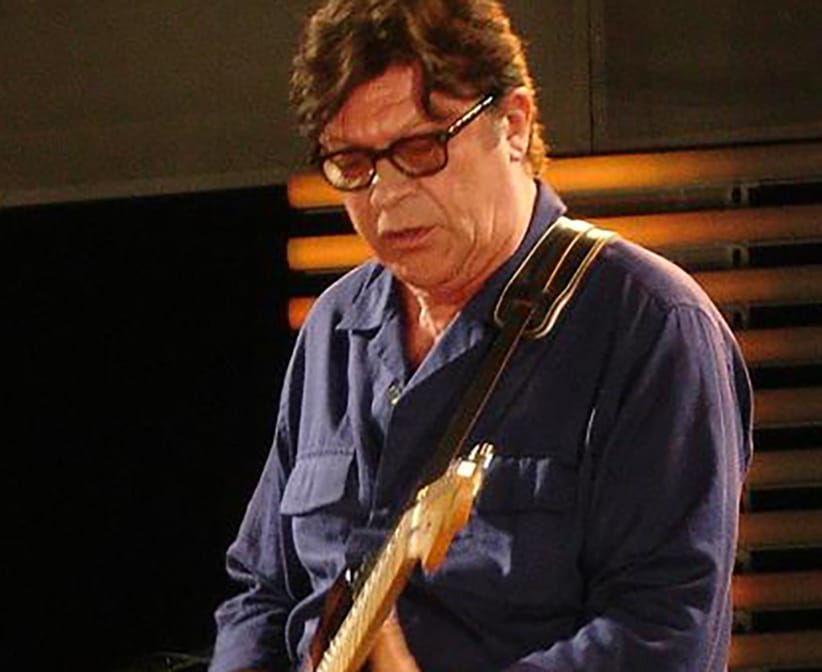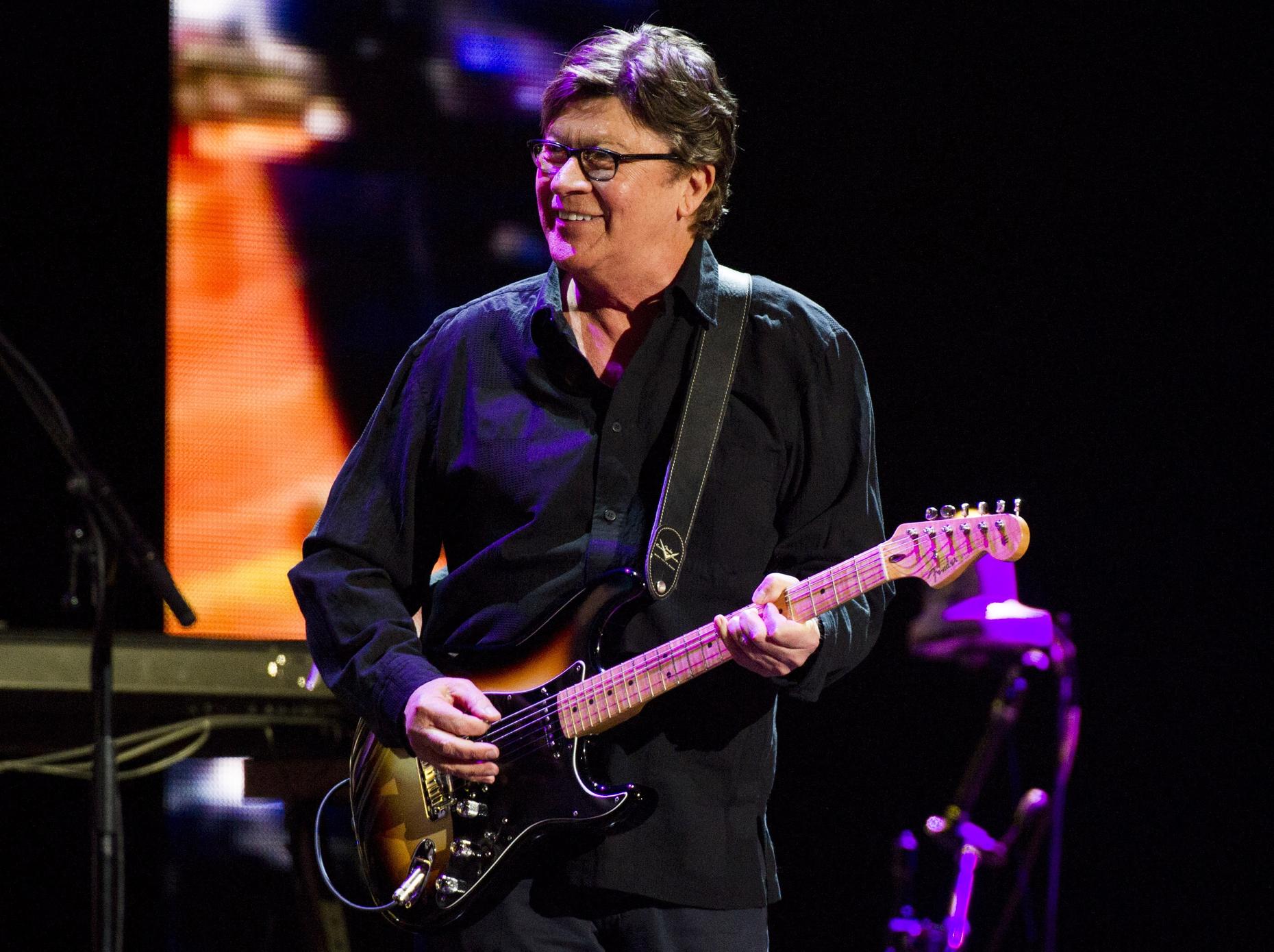Robbie Robertson: The Architect Of Rock 'n' Roll's Timeless Melodies
When one dives into the history of rock 'n' roll, Robbie Robertson stands as a towering figure, a master architect who helped shape the genre's most enduring sounds. As the creative force behind The Band, Robertson's contributions transcend mere music-making. His ability to blend rock, country, blues, and even Indigenous influences into a cohesive and groundbreaking sound has set him apart as one of the most influential musicians of his time. His legacy extends far beyond the stage and studio, influencing countless artists and leaving an indelible mark on the industry.
Music enthusiasts worldwide recognize Robbie Robertson as a pivotal figure in the evolution of rock music. His work with The Band, particularly classics like "The Weight," has solidified his place in history. Yet, his impact goes deeper than the charts. Robertson's songwriting prowess, coupled with his unique guitar style, has inspired generations of musicians. From his early days in Toronto to his collaborations with legends like Bob Dylan, Robertson's journey is one of relentless creativity and innovation. His story is not just about music; it’s about artistry, culture, and the power of storytelling.
| Full Name | Robbie Robertson |
|---|---|
| Date of Birth | July 5, 1943 |
| Place of Birth | Toronto, Canada |
| Profession | Guitarist, Songwriter, Producer |
| Spouse | Dominique Robertson |
| Children | Two daughters |
| Indigenous Heritage | Mohawk, Six Nations Reserve |
| Awards | Inducted into the Rock and Roll Hall of Fame (1994) |
| Notable Collaborations | Bob Dylan, Eric Clapton, Martin Scorsese |
| Reference | Rock and Roll Hall of Fame |
Robertson's early life in Toronto, Canada, was steeped in the rich traditions of Indigenous music, thanks to his mother's Mohawk heritage. Growing up, he was exposed to the vibrant sounds of blues, country, and rock 'n' roll, all of which would later influence his work. By the age of 15, he was already performing in local bands, quickly developing his skills as a guitarist. It was during this formative period that he met Ronnie Hawkins, a rockabilly singer who became his mentor and opened the doors to professional music. This pivotal encounter would eventually lead Robertson to join Hawkins' band, The Hawks, where he first met his future collaborators in The Band: Levon Helm, Rick Danko, Richard Manuel, and Garth Hudson.
Read also:Unveiling The Truth Rohit Shetty And The Enigma Of His Alleged Second Wife
Playing with Ronnie Hawkins allowed Robertson to refine his style, blending the raw energy of rock with the soulful depth of blues and the storytelling traditions of country music. It was during this time that he began writing songs, a skill that would define his career. The decision to leave Hawkins and form The Band was not an easy one, but it was necessary for their artistic growth. Together, they embarked on a musical journey that would revolutionize the industry. Their collaboration with Bob Dylan in 1965, resulting in the iconic Basement Tapes, further cemented their status as pioneers of a new sound.
The Band's music was a melting pot of genres, seamlessly blending rock, country, blues, and gospel. Robertson's guitar work was a cornerstone of this sound, crafting intricate melodies that complemented the vocals of his bandmates. Songs like "The Weight," "Up on Cripple Creek," and "Chest Fever" became timeless classics, ensuring that The Band's legacy endures. Robertson's songwriting, often drawing from his personal experiences and the stories of those around him, created a profound connection with listeners. His lyrics, rich in narrative and emotion, set him apart from other songwriters of his time.
Robertson's Mohawk heritage plays a significant role in his work, adding a unique dimension to his music that resonates with audiences worldwide. This cultural influence is evident in his ability to weave intricate tales into his songs, from the haunting beauty of "Tears of Rage" to the nostalgic charm of "Across the Great Divide." The Band's influence on music history cannot be overstated. They were among the first to incorporate elements of Americana into their work, paving the way for future artists to experiment with their music. Their impact can be heard in the works of countless artists, from Neil Young to The Black Keys.
After The Band disbanded in 1976, Robertson embarked on a successful solo career. His debut album, released in 1987, featured collaborations with some of the biggest names in music, including Eric Clapton and Ringo Starr. This allowed him to explore new musical directions while maintaining the signature sound that fans had come to love. Tracks like "Somewhere Down the Crazy River" and "Breakdown" showcased his versatility as an artist. Throughout his career, Robertson has collaborated with a wide range of artists, from Martin Scorsese to Taylor Swift, expanding his reach and contributing to projects outside of the music industry.
His work on the soundtrack for Scorsese's "The Last Waltz" exemplifies his ability to adapt his music to different mediums while maintaining its integrity. Robertson's personal life is equally fascinating. A proud father and grandfather, his family remains a crucial part of his life. His dedication to promoting Indigenous rights and culture is a testament to his character and values. This commitment extends to his involvement in various projects that celebrate and preserve Indigenous heritage.
Robertson's influence on the music industry is undeniable. His ability to blend different genres and create something entirely new has left a lasting impression on generations of musicians. His legacy is not just in the music he created but in the way he inspired others to push the boundaries of what music can be. His work continues to inspire new generations of artists, ensuring that his legacy will endure for years to come.
Read also:Sam Sorbee The Heartbeat Behind Modern Music
In the broader context of the music industry, Robertson's impact is felt in the evolving trends of rock and Americana. His collaborations with legendary figures like Bob Dylan and Eric Clapton have set a standard for artistic partnerships. The influence of his Indigenous heritage can also be seen in the growing recognition of Indigenous artists in the mainstream music scene. Robertson's dedication to preserving his cultural roots while pushing musical boundaries has paved the way for a new generation of artists who embrace their unique identities.
Moreover, Robertson's work extends beyond the stage and studio. His contributions to film soundtracks and documentaries have expanded his influence into other creative fields. His collaboration with Martin Scorsese on "The Last Waltz" is a prime example of his ability to adapt his music to different mediums while maintaining its authenticity. This versatility has allowed him to remain relevant in an ever-changing industry, continually reinventing himself while staying true to his roots.
As we reflect on Robbie Robertson's career, it becomes clear that his impact extends far beyond the music itself. His influence can be seen in the way artists approach their craft, the stories they tell, and the cultural connections they make. His legacy is not just about the songs he wrote or the albums he produced but about the way he inspired others to think differently about music. In a world where trends come and go, Robbie Robertson's music remains timeless, a testament to his enduring genius.
For music lovers and aspiring musicians alike, exploring Robbie Robertson's work is an essential journey. Whether through The Band's classic hits or his solo projects, there is much to discover. His music invites listeners to reflect on their own stories and the world around them. In a rapidly changing industry, Robertson's commitment to authenticity and innovation serves as a guiding light for those who seek to make their mark on the world of music.


